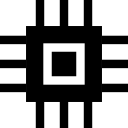Computer organization: Difference between revisions
No edit summary |
No edit summary |
||
| Line 5: | Line 5: | ||
== Big ideas in computer organization == | == Big ideas in computer organization == | ||
=== | === Information layer<ref>http://csilluminated.jbpub.com/3e/</ref> === | ||
* [[Binary | Binary values and number systems]] | * [[Binary | Binary values and number systems]] | ||
* [[Data representation]] | * [[Data representation]] | ||
=== | === Hardware layer<ref>http://csilluminated.jbpub.com/3e/</ref> === | ||
* [[ | * [[Logic gates and circuits]] | ||
* [[Computing components]] | * [[Computing components]] | ||
| Line 32: | Line 32: | ||
* [[Common features of applications]] | * [[Common features of applications]] | ||
Binary representation | === Binary representation === | ||
* [[Bits, bytes, binary, denary/decimal, hexadecimal]] | |||
* [[Binary | Binary values and number systems]] | |||
* [[Data is represented in the computer]] | |||
=== Simple logic gates === | |||
* [[Gates and Circuits]] | |||
* [[Boolean operators]] | |||
* [[Truth tables]] | |||
* [[Logic diagram]] | |||
*[[ | |||
*[[ | |||
*[[ | |||
*[[ | |||
== References == | == References == | ||
Revision as of 08:10, 12 April 2016

Computer Organization[1]
How does a computer actually work? How do they transform what you type into a program that shows cute cat pictures?
Big ideas in computer organization
Information layer[2]
Hardware layer[3]
Computer architecture
- Outline the architecture of the central processing unit (CPU) and the functions of the arithmetic logic unit (ALU) and the control unit (CU) and the registers within the CPU
- Primary memory
- Cache memory
- The machine instruction cycle
Secondary memory
Operating systems and application systems
Binary representation
- Bits, bytes, binary, denary/decimal, hexadecimal
- Binary values and number systems
- Data is represented in the computer